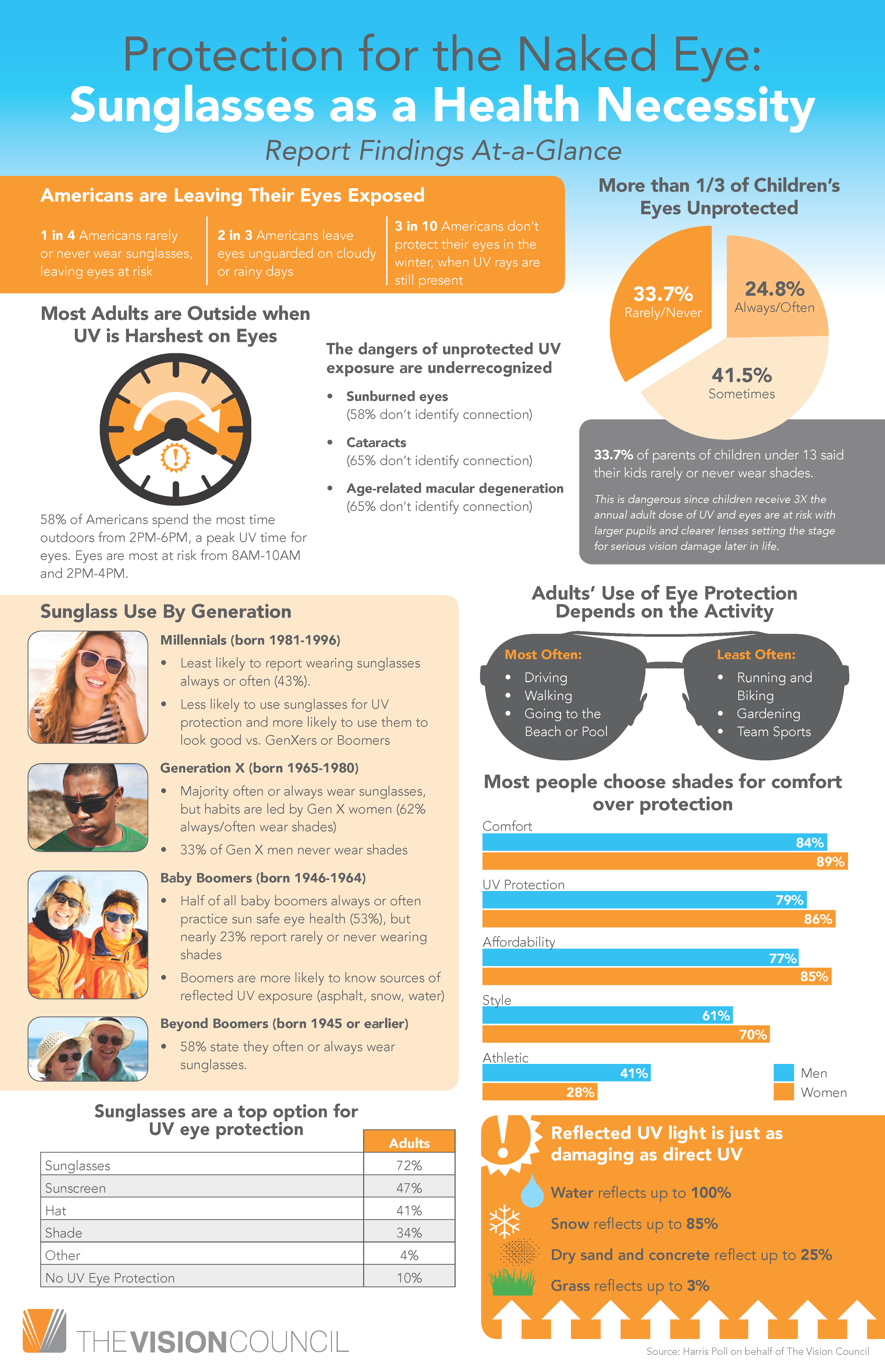
UV Exposure: What Staff and Patients Need to Know
A new infographic from The Vision Council details common misconceptions among consumers about the importance of sunwear and how excessive UV exposure can damage their eyes.
Tip: Reviewing each of the points—and misconceptions—presented in this infographic would make a great agenda
for an upcoming staff meeting.
to see.
Reviewing each of the points—and consumer misconceptions—presented in it would make a great agenda for an upcoming staff meeting. As you’ll see, the basic lack of understanding among consumers about the dangers of UV is appalling. And, when it comes to your youngest patients, that low level of comprehension is downright dangerous.
- CLOUDY WITH A CHANCE OF…. Most Americans don’t consider UV exposure or the need for sunwear protection on cloudy days or in the winter.
- Even among those who wear sunglasses in the bright sun, 2 out of 3 Americans don’t protect their eyes on cloudy or rainy days.
- 3 in 10 Americans don’t protect their eyes at all during the winter.
- MAKING THE CONNECTION. The vast majority of consumers surveyed in the Harris Poll for The Vision Council don’t understand the dangers of unprotected UV exposure.
- 58% don’t identify a connection between sunburned eyes and exposure to UV.
- 65% don’t see any correlation between exposure to the sun and cataracts.
- An equal number, 65%, don’t identify a link between exposure to UV and age-related macular degeneration (AMD).
- UNDERSTANDING REFLECTED LIGHT. Rare is the consumer who understands that reflected UV light is just as damaging as direct UV light…and hence the importance of sunwear in all conditions.
- For example, water reflects up to 100% of UV light, snow up to 85%.
- Even dry sand and concrete reflect up to 25% of UV light.
Be sure to share these stats about reflected light with staff. Chances are they will be surprised, too, at the damage that can be caused by reflected, not just direct, UV light.
However you use it, this infographic underscores the importance of rethinking and reviewing the information you communicate to patients about the importance of sunwear.
In addition to using the download as a topic of discussion with staff, also consider printing and posting it in the dispensing or exam area. Going through it with patients—especially those with young children—is an easy way to make the proverbial medicine go down.
Also, post the infographic to consumer-facing communications like your Facebook page or Website. It’s a great way to start a dialogue.
Hopefully, delivering the information in this infographic format will be just one more way of reinforcing and tying into the messaging you are already delivering in-office. If not, now is the time to rethink the conversation you’re having with patients and customers.
Are you already communicating this sort of important information? If so, tell us on the Facebook page here about what works best to gain the attention of your patients about the dangers of UV.
To download and print out the infographic, go to: http://www.thevisioncouncil.org/sites/default/files/TVC_UV_One-Pager_FINAL.pdf
Comments are closed.








